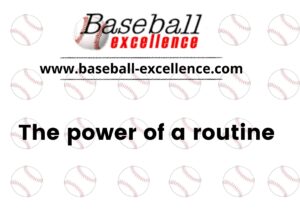Going up to the regulation field? Good base running is one of the least-taught aspects of the game.
- The first week of the season take the players through all the possibilities at each base. Begin at home plate and walk them around each base. (See your Practice Planner.)• Teach good running form;
- Run with the head up.
- Relax the muscles in the face. (Any tightness in the face will translate down into the neck and shoulder muscles, restricting movement.)
- Run on the balls of the feet with the toes pointing straight ahead.
- Use the arms as levers. Run with a pumping motion of the arms, chin to back pocket. Run with the elbows close to the sides. Do not let them move from side to side, away from the body.
- Cup the hands loosely.
- Foot speed is dependent on arm speed. The faster the arms pump back and forth, the faster the feet will move.
- Run with the shoulders level.
- Run with the body leaning forward slightly.
- Make form running a daily routine. The different exercises emphasize good form and help develop speed and power. (Practice Planner & Complete Practice Video)
- Use game situations to teach base running. (You’ve heard that before.)
- Emphasize taking the correct leads at each base so that every potential situation may be applied.
For instance, the correct primary and then the three-step walking lead at third base puts the runner at a favorable distance to score on a wild pitch or be able to get back to the bag in time to tag up on a fly ball.Teach the technique and then tell them why. If you can’t explain something clearly then you don’t know it and it would be helpful to go back and learn more about it. That is what teachers do. - Teach correct sliding form early in the season.
- Players and coaches should concentrate on the opponents pre-game outfield-infield drill. Look at the players’ arm strength and throwing accuracy. Knowledge of how well they throw, how they use their cutoffs and their athletic ability can be used on the base paths.
- Emphasize good base running when you run your situational offensive batting practice.
- One of the benefits of a sound off-season strength and conditioning program is to improve the speed of your players.
Plays at a base are often decided by inches. Any edge a base runner can get is valuable. (These little things add up.) - To develop good base running instincts, players have to play a lot of games. Schedule as many as possible during the season. (But don’t neglect practices.)Base Running Do’s, Don’ts and Various Situations.
- When running from home to first and the ball is hit into the outfield, always make an aggressive, full- speed turn at the bag.This puts pressure on the defense and can cause a hurried throw or bobbled ball. It also shows how much you want to succeed.
- Always run full speed on the bases. Play like you want to win.
- If you have singled and there is a runner ahead of you trying to score, read the throw from the outfield to the cutoff man. If it is over his head, go to second base.
- If you are on base in a bunt situation, make sure the ball takes a downward angle off the bat.
- Always touch every base. Infielders have been known to drop balls. This is especially true when running to first base.
Many times you will see a youth player stop midway along the first base line because he grounded out to the pitcher. Run.Make your players run full speed through every base; every time. - Always slide on close plays at second, third and home; at first only to avoid a tag.
- As a hitter, run full speed on all fly balls. Outfielders have been known to drop balls. Lack of hustle in that situation is a cardinal sin.
- On all hit and runs, take a quick look at home (about half way- 3 or 4 steps after your primary lead) to see the angle of the ball off the bat.
- “Read” the ball in the dirt and make the determination to advance.
- Be 100% sure of scoring from third on a passed ball with one or no outs. With two outs you may take more of a chance.
- Slide hard at second to break up the double play. Go straight into the bag. Do not try to interfere with the fielder.
- On plays at the plate slide late and slide hard.
- On strike three, be aware of a wild pitch or passed ball so you may advance to first.
Time and time again I see young hitters strike out and then hang their heads while the pitch gets away from the catcher.The coach is yelling and screaming and many kids showed no sign of comprehension. They are too engrossed in their failure to take advantage of the defense’s miscue.That’s an example of baseball immaturity. Or it’s an example of weak coaching. Or it’s an example of immaturity because of weak coaching. - Don’t get tagged out easily. Force the rundown.
- Don’t slow down as you reach first. Break down after you cross the bag.
- Don’t get picked off on a hit and run.
- Don’t be passive on the base paths. Aggressive base runners put pressure on the defense.
- Don’t make the first or third out at third base. You are already in scoring position at second.
- Don’t clap you hands at third base in an effort to distract the pitcher. That shows a lack of class.
- Don’t take unnecessary chances on base running that may take you out of a big inning.
- On a base hit a good time to attempt to take the extra base is with two outs and an average hitter on deck.
With one or no outs it may be too reckless. The score and the situation in the game will determine that.
Base runner on first:
1. Find the ball.
2. Get the sign.
3. Determine the number of outs.
4. As you take your lead, watch the pitcher’s back heel. (If it comes up, that is the beginning of his pick-off move. If his front leg lifts, he is going to the plate. RH) - Base runner on first, go halfway (depending on fly ball depth) on medium fly balls so that you may advance if dropped.
- If there is a base runner ahead of you make sure he is advancing before you go to the next base.
- If the pitcher makes a mental error and begins his delivery with the wind-up, you have a free pass to steal the next base. Go the instant he begins his step back.
- On first, with a left hand pitcher take a shorter, one-way lead; right, left, right.
- With two outs, take a two out lead at second; out and away from the base line.
- On second base, watch the pitcher and listen to the third base coach for guidance.
- On running from first to third determine the location of the ball, the arm strength of the outfielder and the game situation.
- On any base the runner should never take his eyes off the player with the baseball. He should not let his concentration wander.
- On first base the runner should concentrate on the pitcher’s back heel. We mentioned that before but we want to stress the point. If that back heel lifts off the ground he must throw over or step off.
- Take the correct primary leads every time. If you do that you will not get caught flat-footed and will not be susceptible to a pick-off move. You will always have the balance to get back.
- Don’t leave the base to begin your primary lead until the pitcher toes the rubber. This is a no-brainer but we have seen mounds where the rubber becomes obscured by the clay and is difficult to see.We played against a pitcher once who set up in back of the rubber and acted as if he was in fact, toeing the rubber.Since he was not, he was free to do anything he wanted (as an infielder could). He almost picked off one of our runners this way. Our runner left first base and took his primary lead, thinking the pitcher was on the rubber.So make sure the pitcher toes the rubber before leaving the safety of a base.
- Track the ball out of the pitcher’s hand all the way to home plate. (The third base coach can simply remind his runners to “track the ball.”)
- When on second base concentrate on the pitcher and let the third base coach give you direction as to the whereabouts of the middle infielders. (Coach Grant uses the phrase “Plenty of room.” That means to the runner that he can safely take an extra shuffle step. If he sees the beginning stages of a pick-off attempt he shouts, “Back!”)
- Before you take your three-step walking lead or your five-step walking lead at third base, make sure the pitcher is going to deliver the ball to the plate.
Don’t go walking down the line out of your primary lead at the pitcher’s first movement. He can throw over to third several ways. Time your walking lead so that your right foot (last step) lands at the exact moment the ball enters the catcher’s glove. - When your team is behind, don’t take unnecessary chances on the base paths that can take you out of a big inning.
It takes no talent to hustle.
A great deal of time should be spent teaching sound base running; both in practice and as the games are unfolding. Primary and secondary leads, three step and five step walking leads should actually be choreographed. They are that exact. This accuracy allows the base runner his best chance of either getting back to the base safely or advancing to the next base quickly.
Spend a lot of time teaching these valuable skills. Professional baseball has gotten away from emphasizing good base running. I’m sure it is related to the power game that is now played. But youth coaches can get a real edge if they will teach and demand first-rate base running.




